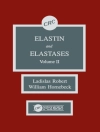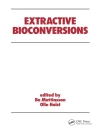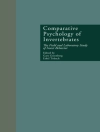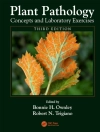This report is a product of the Committee on Restoration of the Greater Everglades Ecosystem (CROGEE), which provides consensus advice to the South Florida Ecosystem Restoration Task Force. The Task Force was established in 1993 and was codified in the 1996 Water Resources Development Act (WRDA); its responsibilities include the development of a comprehensive plan for restoring, preserving and protecting the South Florida ecosystem, and the coordination of related research. The CROGEE works under the auspices of the Water Science and Technology Board and the Board on Environmental Studies and Toxicology of the National Research Council. The CROGEE’s mandate includes providing the Task Force not only with scientific overview and technical assessment of the restoration activities and plans, but also providing focused advice on technical topics of importance to the restoration efforts. One such topic was to examine "the linkage between the upstream components of the greater Everglades and adjacent coastal ecosystems."This report addresses this issue by breaking it down into three major questions: What is the present state of knowledge of Florida Bay ("the Bay") on scientific issues that relate to the success of the overall CERP? What are the potential long-term effects of Everglades restoration as currently designed on the nature and condition of the Bay? What are the critical science questions that should be answered early in the restoration process to design a system that benefits not only the terrestrial and freshwater aquatic Everglades but the Bay as well?This study was inspired in part by the 2001 Florida Bay and Adjacent Marine Systems Science Conference held on April 23-26, 2001 in Key Largo, Florida. An overlapping meeting of the CROGEE was held at the same location on April 26-28, 2001. The conference was organized by the Program Management Committee (PMC) of the Florida Bay and Adjacent Marine Systems Science Program. The PMC organized the conference around five questions suggested by the Florida Bay Science Oversight Panel. These questions related to circulation, salinity patterns, and outflows of the Bay; nutrients and the nutrient budget; onset, persistence and fate of planktonic algal blooms; temporal and spatial changes in seagrasses and the hardbottom community; and recruitment, growth and survivorship of higher trophic level species. Some of these issues are discussed in the present report. However, as noted earlier, this report focuses on the subset of questions that relate to linkages between the Bay and the upstream portion of the Everglades system that arose at the 2001 Florida Bay Conference.
Board on Environmental Studies and Toxicology & Committee on Restoration of the Greater Everglades Ecosystem
Florida Bay Research Programs and Their Relation to the Comprehensive Everglades Restoration Plan [EPUB ebook]
Florida Bay Research Programs and Their Relation to the Comprehensive Everglades Restoration Plan [EPUB ebook]
Mua cuốn sách điện tử này và nhận thêm 1 cuốn MIỄN PHÍ!
Ngôn ngữ Anh ● định dạng EPUB ● Trang 54 ● ISBN 9780309183048 ● Nhà xuất bản National Academies Press ● Được phát hành 2002 ● Có thể tải xuống 3 lần ● Tiền tệ EUR ● TÔI 7143249 ● Sao chép bảo vệ Adobe DRM
Yêu cầu trình đọc ebook có khả năng DRM












